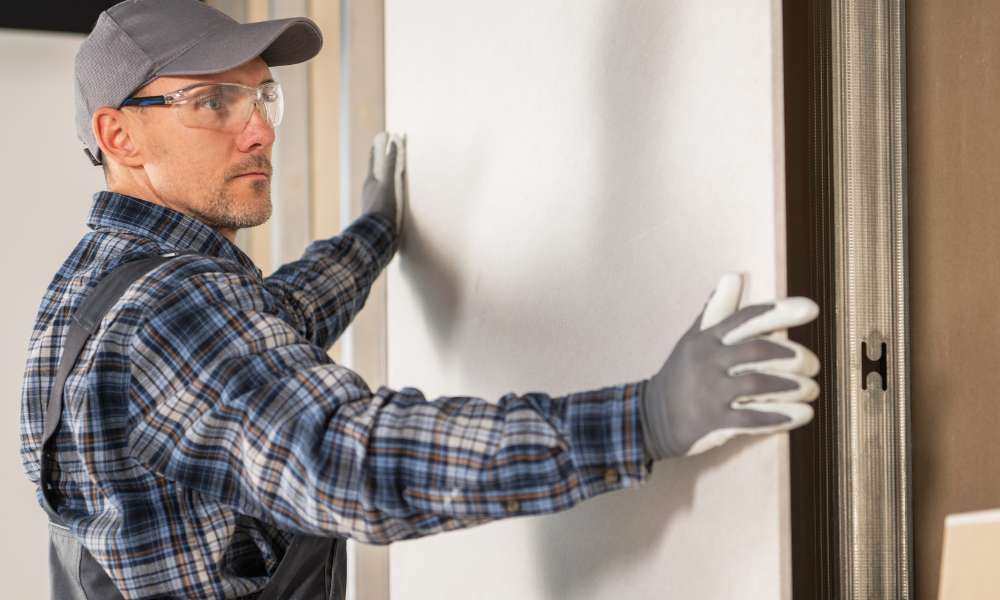Enhancing your home’s energy efficiency is essential, and learning how to insulate a wall without removing the drywall presents a straightforward, less invasive solution. This innovative method allows homeowners to add insulation without the extensive labor and expense associated with tearing down existing structures. The primary benefits of choosing to isolate a barricade without removing the drywall include cost savings, reduced project time, and minimized disruption to daily life. This approach is particularly important for maintaining the aesthetic integrity of your space while improving thermal performance and comfort year-round. By adopting this method, you are making a smart, sustainable choice that benefits both your wallet and the environment.
Can I Insulate A Wall Without Removing The Drywall?
Yes, it is possible to insulate a wall without removing the drywall. One common method is to use blown-in insulation, which involves drilling small holes in the barricade and blowing cushioning material into the cavity behind the drywall. This can help improve the energy efficiency of your home without the need for extensive renovation.
Can I Paint Over The Insulated Wall Once The Project Is Completed?
Yes, you can paint over an insulated wall once the project is completed. However, it is important to ensure that the insulation material used is compatible with painting. Some insulation materials may require a specific type of paint or primer for proper adhesion. It is recommended to consult with a professional or the manufacturer of the cushioning material to determine the best painting process.
Understanding The Importance Of Wall Insulation
Before delving into the specifics of isolating a barricade without removing drywall, it’s essential to understand why wall insulation matters. Cushioning serves as a barrier that helps regulate temperature and minimize heat transfer between the interior and exterior of a building. By insulating your walls, you can reduce energy consumption, lower utility bills, and create a more comfortable indoor environment year-round.
Assessing Your Wall’s Current Condition
Assessing the current condition of your wall is crucial before embarking on any insulation project. One innovative approach gaining popularity is cushioning a barricade without removing the drywall. This method allows for improved energy efficiency without the hassle of extensive renovations. By carefully examining your wall’s condition, you can identify areas that may need reinforcement or repair before implementing cushioning techniques.
Choosing The Right Insulation Material
Choosing the right insulation material for insulating exterior walls without removing drywall, it’s important to consider factors such as R-value, ease of installation, and moisture resistance. One option that has gained popularity in recent years is spray foam insulation. Not only does spray foam have a high R-value, but it can also fill gaps and crevices effectively, providing better insulation overall. Another option to consider is mineral wool cushioning, which is known for its fire-resistant properties and excellent soundproofing capabilities.
Preparing The Wall Surface
Before proceeding with insulation installation, prepare the barricade surface to ensure optimal results. Start by cleaning the barricade thoroughly to remove any dust, dirt, or debris. Patch any existing holes or cracks using joint compound or spackling paste, and allow it to dry completely. Sand the patched areas smooth for a seamless finish. Finally, apply a primer to the wall surface to promote adhesion and enhance the effectiveness of the insulation.
Installing Insulation Without Removing Drywall
Now that the wall surface is prepped and ready, it’s time to install the insulation. The method you choose will depend on the type of insulation material selected and the specific characteristics of your barricade. For fiberglass batts or rolls, simply cut the cushioning to size and fit it snugly between the barricade studs, ensuring complete coverage. For spray foam or cellulose cushioning, use specialized equipment to fill the barricade cavity evenly.
Sealing Air Leaks And Gaps
To maximize the efficiency of your wall insulation, it’s crucial to seal any air leaks or gaps that may compromise its effectiveness. Use caulk or foam sealant to seal around windows, doors, electrical outlets, and any other penetrations in the wall. Pay close attention to areas where pipes or wires enter the wall, as these are common sources of air leakage. Proper sealing will help prevent heat loss and improve energy efficiency.
Testing And Evaluating Insulation Performance
Implementing cutting-edge simulation software can simulate different insulation scenarios and predict their impact on energy consumption. By inputting specific building parameters, such as material types and layout configurations, property owners can explore various cushioning options virtually before making any physical changes. This forward-thinking approach enables informed decision-making when it comes to enhancing cushioning performance while preserving existing structures like drywall.
The Final Thought
Insulating a wall without removing drywall is a feasible and effective way to improve energy efficiency, enhance comfort, and reduce utility costs. By following the steps outlined in this comprehensive guide, you can tackle this project with confidence and achieve optimal results. Remember to choose the right insulation material, prepare the barricade surface adequately, and seal air leaks for maximum effectiveness. With proper planning and execution, you can enjoy the benefits of a well-insulated home for years to come.

